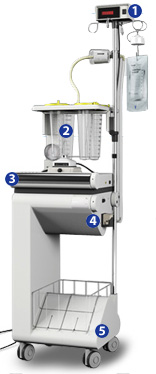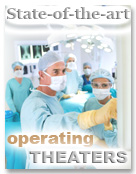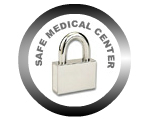
- RP Specialized in:
- Plastic Surgery in Argentina
- Treatments
- Breast Implant Surgery
- Rhinoplasty
- Vaser® Lipo System
- Liposuction
- Eyelid Surgery
- Tummy Tuck
- Breast Lift
- Facelift
- Lifting the Tip of the Nose
- Breast Reduction
- Double Chin Surgery
- Eye Shaping Surgery
- Chin Augmentation
- Ear Surgery
- Mentoplasty
- Eyebrow Lift
- Mini Facelift
- Cantopexy
- Deep Chemical Peel - Resurfacing
- Plastic Surgery Information
- Plastic Surgery Costs
- Cosmetic Procedures
- Hair Transplant
- Dermatology
- Phlebology
- Related information
- Related Links
- Web Directories
- Free Quotation
- Webmaster
» Vaser® Lipo System in Argentina, liposelection
Table of Contents:
- » Pictures Before and After
- » General Information: risks, anesthesia, recovery, pre-operative tests, etc.
- » How to get a quote - Photographs necessary - Requirements.
"Privilege safety issues over cost savings. Your health comes first. Go for quality."
» General Information: risks, anesthesia, recovery, pre-operative tests:
What is Vaser® Lipo System?
 Vaser Liposelection® (or Vaser® Lipo System) is a sophisticated type of Liposuction which uses Utrasound to first melt localized fat and then absorb it using cannulas (Lipo: fat / suction: absorption using cannulas). The procedure is a liposuction, but the fat is melt before being absorbed and heat is generated during this process. Vaser Liposelection® is a type of ultrasound-assisted liposuction procedure which is less traumatic for the patient, with less bruising and less damage to the surrounding tissue.
Vaser Liposelection® (or Vaser® Lipo System) is a sophisticated type of Liposuction which uses Utrasound to first melt localized fat and then absorb it using cannulas (Lipo: fat / suction: absorption using cannulas). The procedure is a liposuction, but the fat is melt before being absorbed and heat is generated during this process. Vaser Liposelection® is a type of ultrasound-assisted liposuction procedure which is less traumatic for the patient, with less bruising and less damage to the surrounding tissue.
What are it's advantages, and when do we recommend it?
 We use Vaser Liposelection® in liposuction procedures where there is flaccid fat in the skin because, from the heat generated with this technique, there is a sort of retraction which turns the skin firmer and causes it to adhere to the tissues. Vaser Liposelection® is a type of ultrasound-assisted liposuction procedure which is less traumatic for the patient, with less bruising and less damage to the surrounding tissue. As regards the absorption of fat, this procedure is as effective as traditional liposuctions. The difference in the results can be appreciated where there is flaccidity. Heat is generated while the procedure is being performed and fat melts with the ultrasound. The heat thus generated causes the skin to retract; this is ideal when flaccid skin areas are liposuctioned, because this procedure eliminates flaccidity and causes the skin to retract and tighten, and therefore it adheres to the tissues. What is important is that liposelection is a type of liposuction, as the fat is first dissolved with fine ultrasound-producing cannulas and then aspirated. Liposuction procedures performed through Liposelection are more expensive than ordinary Liposuctions. As explained above, this procedure is prescribed for patients with flaccidity in the area to be liposuctioned. Post-operative recovery is more demanding and compression garments and bandages must be worn during the first weeks after surgery. If you have flaccid arms, VASER Liposelection is used to avoid the scar that a dermolipectomy would leave.
We use Vaser Liposelection® in liposuction procedures where there is flaccid fat in the skin because, from the heat generated with this technique, there is a sort of retraction which turns the skin firmer and causes it to adhere to the tissues. Vaser Liposelection® is a type of ultrasound-assisted liposuction procedure which is less traumatic for the patient, with less bruising and less damage to the surrounding tissue. As regards the absorption of fat, this procedure is as effective as traditional liposuctions. The difference in the results can be appreciated where there is flaccidity. Heat is generated while the procedure is being performed and fat melts with the ultrasound. The heat thus generated causes the skin to retract; this is ideal when flaccid skin areas are liposuctioned, because this procedure eliminates flaccidity and causes the skin to retract and tighten, and therefore it adheres to the tissues. What is important is that liposelection is a type of liposuction, as the fat is first dissolved with fine ultrasound-producing cannulas and then aspirated. Liposuction procedures performed through Liposelection are more expensive than ordinary Liposuctions. As explained above, this procedure is prescribed for patients with flaccidity in the area to be liposuctioned. Post-operative recovery is more demanding and compression garments and bandages must be worn during the first weeks after surgery. If you have flaccid arms, VASER Liposelection is used to avoid the scar that a dermolipectomy would leave.
Further Information, visit: www.vaser.com
What you should know about Liposuction:
We should keep in mind that liposuction is not a proper surgical procedure for losing weight or
for losing extra pounds.
For its name is self-explanatory: it helps to sculpt, to "shape" the body. Liposculpting does not substitute diet and exercise. This surgery helps improve body contour and remove unwanted fat (resistant to traditional methods for weight loss) from specific areas where both diet and exercises have proven to be ineffective. An overweight patient should lose weight before surgery and be able to keep excess weight off. After that, liposuction may be performed and help improve body shape. After undergoing liposuction, patients must maintain their normal weight. Otherwise, pockets of excess fat will gradually increase in the areas contoured, thus spoiling the outcomes of liposuction.
You should have realistic expectations about the outcome of liposuction. It may improve your appearance, but in no case will it make people start to treat you differently. Liposuction will not magically turn your body into an ideal one. You should think carefully about your expectations and analyze them together with your surgeon before making a decision.
Bear in mind that, after all, liposuction is a surgery, and, as such, it carries risks.
Are there any risks? Which complications may arise?
All surgeries involve Risks:
By giving you all the information you need to make a decision, including information on the risks involved, we show our respect for you and allow you to have the last say in all matters concerning your surgery. We also believe that this speaks volumes about RP Medical Center, about who we are and how we work. It is our responsibility to provide you with all necessary information. We consider that Quality goes hand-in-hand with Responsibility. All patients have a right to be explained how the surgical procedure will be performed, together with the potential risks and complications (which are not caused by a Physician’s errors or malpractice, but which derive from the surgery itself or cannot be anticipated), and the advantages and disadvantages of certain techniques, so that they can think it over and make a balance before making any final decision.
Any surgical procedure has risks (whether an optional surgery, which you choose to undergo, or an emergency surgery); some risks are common to all surgical procedures and others are specific to each type of surgery. No surgery is exempt from risk. A plastic surgery is, after all, a surgery. Risks (each under different incidence percentages; see below) range from post-surgery complications which can be secondarily solved (bad scarring, seroma, skin necrosis, etc.) to severe and fatal complications such as reactions to anesthesia, pulmonary embolism (blood clots or "small blood balls" which could migrate to the heart and block the pulmonary artery causing severe injuries or even death), among others.
In 1997, the results of a survey were disclosed in the United States, based on 400,675 surgical procedures involving Plastic Surgery and Surgical Repair, where 7 deaths were found. The rate of severe complications (hypotension, hematoma, infection, hypertension episodes, sepsis) was 0.47% (1 case every 230 patients). One death occurred every 57,000 patients, that is, a mortality rate of 0.0017%; slightly less than 1 death every 57,000 patients. The survey documented the approximate safety level for plastic surgeries conducted by certified plastic surgeons in authorized facilities in the US, during those years. Another survey conducted in the United States (from 1994 through 1998) further accounted for deaths occurred after Liposuctions. Survey findings reported one death every 5,000 patients, which represents a mortality rate of 0.02 % and 20 deaths every 100,000 liposuctions. The main cause of death was pulmonary thromboembolism.
Liposuction presents increased risks for individuals suffering from chronic diseases such as diabetes, significant cardiac or pulmonary disorders, poor circulation, or for those who have recently undergone surgeries close to the area to be treated.
Risks must be minimized by taking all appropriate preventive measures and complying with certain rules and requirements, including the requirement for pre-surgery tests, pre-operative and post-operative indications, the practice of surgeries in the proper facilities (which must be fully-equipped to cope with any inconveniences), patients’ full medical history, and their compliance with the Physicians’ guidelines after the surgery. It should be recalled that complications and risks may arise even where all precautions were taken and even if the patient is healthy. Given that these complications are not predictable, they may affect the patients of even the best surgeons in any country of the world, despite any precautions taken to reduce potential risks.
¿Com How is the liposuction quote estimated?
Liposuction quotes are based on the number and size of the body parts to be contoured. Miniliposuction or miniliposculpting is the least expensive procedure ("mini" stands for a small-sized area but in fact, it is similar to any other liposuction though simpler and quicker due to the smaller size of the part of your body to be treated).
What is liposuction? What type of anesthesia is used? Does liposuction require hospitalization?
Liposuction consists in the insertion of very thin cannulas (synonym: narrow tubes) through a tiny incision of 3 millimeters in the skin targeting diet-exercise-resistant deposits of localized fat, for instance, in the abdomen, waist, hips, thighs, arms, the back, calves, neck, etc. The suction power comes from a vacuum pump or a large syringe.
Liposuction can be performed using local anesthesia with sedation or general anesthesia. Greater volume liposuctions (involving either several parts or large body fat deposits) or those being performed together with other procedures require 24-hour hospitalization. Patient’s safety is considered a priority.
What precautions should I take after surgery? When can I go back to normal life?
After care
Despite edema (swelling), which will subside gradually, you will notice an almost immediate difference in your body shape. Get complete rest the first 48 hours following surgery. Stitches will be removed on the 8th day. Total recovery will take approximately 1 month (avoid strenuous physical activities only). For instance, after legs or thighs liposuction, cycling is allowed on week 3, although running or high-impact exercising can be practiced on week 6. You should wear a snug elastic garment to help tighten the skin in suctioned body areas for 2-3 weeks. In some cases, some sessions of lymphatic drainage are prescribed to speed up swelling reduction. Results are noticeable from week 2, when swelling starts to subside (an almost imperceptible edema may remain for 6 months or more until it disappears). Almost all side-effects disappear within 3 weeks. If you have unusual symptoms like bleeding, sudden increase in pain or any questions about what can or can’t be done, you should call your surgeon. If your expectations were realistic, you will be satisfied with the results.
What will scars be like?
Scars are tiny. Keep in mind that cannulas are inserted into the skin through an incision of only 3 millimeters. So much so, that in some cases no stitches are required given that scars heal on their own. In most cases, these tiny scars are located in skin creases or in parts of your body that will be covered by swimsuits. They become imperceptible after one year.
Are results lasting? What happens if I gain weight again?
Liposuction results are permanent, as long as you keep normal weight by following a healthy diet and/or getting regular exercise. Otherwise, pockets of excess fat will gradually accumulate in the areas where it was removed.
If I do not live in the City of Buenos Aires: How long should I stay?
You will need to stay in Buenos Aires for 12 nights and 13 days as long as you recover normally during the post-operative period.
Which are the required pre-surgical tests?
It is necessary to undergo the following pre-surgical tests within 1 month before the date of surgery:
- I. Blood test: hemogram, blood sugar, creatinin, hepatogram, clotting time, serology HIV.
- II. Cardiology: ECG and surgical risk.
Your health always comes First: specialized physicians and operating rooms of accredited clinics, in addition to the services of a great clinic: intensive care unit, cardiology department, emergency room, diagnostic imaging and laboratory.
Mandatory pre-surgical instructions:
- Put off smoking 1 month in advance (all smoking patients have an increased risk of skin suffering in the area being operated on and of a delayed healing of scars).
- Discontinue Aspirin intake (Acetyl salicylic acid) 1 month in advance.
- Discontinue Vitamin E intake 1 month in advance.
- Apply anti tetanus vaccine.
- Anticoagulated Patients: Consult your hematologist to change treatment schedule.
» How to get a quote - Photographs necessary to undergo a surgery - Stay - Requirements:
» To request the right quote and provide all necessary information, go to: "How to travel to undergo a surgery", and read "Step No. 1", "Make arrangements for a surgery by following these easy steps." Do not forget to mention the areas of your body you want to be operated on.
» Photographs required for liposuction: Please send pictures of the parts of your body where you want to have a liposuction. Please send one frontal picture and one of both sides of each area. – When asking for a quote, describe the parts of your body you want to have contoured.
» Days of stay for liposuction: 12 nights, 13 days. For further information on stay days, minimum stay, and schedule, among other matters, go to "How to travel to undergo a surgery" , read "Step No. 3", " Make arrangements for a surgery by following these easy steps."
» Hospitalization: In the event of major liposuctions only or if you want to contour several parts of your body, 1 day of hospitalization is necessary. In all other cases, this surgery will not require hospitalization. After surgery, the patient should rest for 8 hours at the clinic and may then go back to their place of accommodation.
» Liposuction Requirements: We should keep in mind that liposuction is not a proper surgical procedure for weight loss. For its name is self-explanatory: it helps to sculpt, to "shape" the body. Liposculpting does not substitute diet and exercise. This surgery helps improve body contour and remove unwanted fat (resistant to traditional methods for weight loss) from specific areas where diet and exercises have proven to be ineffective. In order to be eligible for this surgery, you should not be overweight. If a patient has recently lost weight, then she/he must be able to keep fit through time. An overweight patient should lose weight before surgery and be able to keep excess weight off. After that, liposuction may be performed and help improve body shape. But before undergoing liposuction, patients must be certain that they can maintain their normal weight after the surgery. Otherwise, pockets of excess fat will gradually increase in the areas contoured, thus spoiling the outcomes of liposuction.









